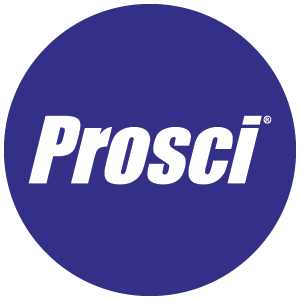The Change Advantage: Thriving Through Economic Headwinds

6 Mins
Published: September 4, 2025

In today's global marketplace, uncertainty has become the only certainty. Leaders face unprecedented challenges—from rising inflation and trade tensions to rapid technological disruption and shifting workforce expectations. Making strategic decisions amid such volatile market conditions demands both agility and foresight.
So how do organizations forge ahead during turbulent times? Let’s examine three business outcomes organizations need to focus on, how to succeed with each, and how you can transform change into a sustainable competitive advantage.
Digital Transformation and Technology Optimization
Enterprise clients across sectors are searching for enhanced leverage from technology investments. After committing significant resources to these platforms, many haven’t achieved intended benefits or realized a positive ROI.
We see this challenge spanning industries: healthcare organizations implementing electronic health records, higher education institutions replacing fragmented student information systems, and logistics companies deploying warehouse management systems and other complex technologies.
This gap between investment and value realization isn't primarily a technology problem—it's a people problem. Realizing benefits from digital transformation hinges on changing the mindsets and behaviors of leaders, managers and front-line team members. Without addressing the people side of change, even the most sophisticated platforms fail to deliver.
Effective change management bridges this gap by:
- Aligning leadership around clear technology adoption goals.
- Engaging users early in the implementation process.
- Providing targeted support for the specific changes required.
- Enabling adoption and usage, not just technical implementation.
AI is a unique opportunity
Artificial intelligence represents both a tremendous opportunity and a significant change management challenge. While AI aspirations and technology advancements soar, value realization lags. Many organizations find themselves at a crossroads after piloting AI solutions without achieving the expected ROI or adoption.
The frustration is palpable. Leaders express disappointment with returns on early AI investments just as economic pressures intensify the need for efficiency.
However, some organizations are already making dramatic policy shifts—one client now requires managers to prove that AI cannot perform specific work before approving new hires.
Effective change management bridges the gap between implementation and AI adoption, especially in global organizations where localized context matters.
Successful AI integration requires change management, enabling:
- Clear connections between AI capabilities and business outcomes.
- Thoughtful workflow redesign incorporating AI.
- Skills development enabling employees to leverage AI tools effectively.
- Cultural shifts embracing AI as an enabler rather than a threat.
- Measurable outcomes from AI adoption.
Organizations that effectively manage the people side of AI adoption position themselves to achieve operational efficiencies while building capacity for innovation. This is a critical advantage during economic uncertainty.
Workforce Adaptation and Engagement
Employee engagement has declined as workers contend with constant pressure from changes. After years of pandemic disruption, inflation, geopolitical conflicts and organizational restructuring, workforce resilience is stretched thin.
The challenge for organizations? Balancing necessary change initiatives with employee belonging, well-being and engagement. This delicate equilibrium becomes even more complex amid global instability and exacerbates the issue for leaders.
Change leaders need to pay immediate attention to:
- Strategic workforce planning – Align talent strategy to evolving dynamics, including AI impacts on jobs, distributed work models, and capability demands. This requires communicating the need for change, identifying appropriate development approaches, and supporting employees through job transitions.
- Organizational restructuring – Ensure that your organizational design delivers on objectives. This can mean making difficult decisions about workforce reductions. How well you manage these changes affects immediate performance, as well as your ability to attract future talent.
- Preserving employee engagement and culture – Maintain connection with critical talent during uncertainty. Employees may struggle with decreased psychological safety, reduced confidence in leadership, rising stressors outside of work, and mandates to do more with less. Organizations are under pressure to reduce costs and think differently about where they invest, but cutting without strategy can deteriorate morale long-term.
Impact of Change Management on Employee Engagement

Effective change management addresses these challenges through:
- Aligning cost reductions with purpose while preserving engagement.
- Tailored and transparent communications that acknowledge concerns while building confidence.
- Comprehensive change impact assessments to identify affected groups.
- Individualized support through the Prosci ADKAR® Model.
- Engaging people to help define the future state.
- Equipping people managers to lead their teams through transition.
Organizations that navigate workforce changes effectively stay productive during transitions while preserving the trust and commitment necessary for long-term performance.
Prosci ADKAR Model

Operational Resilience
The third critical outcome during uncertainty is building operational resilience: the ability to adapt and thrive amid constant disruption. This goes beyond short-term crisis management to developing sustainable capabilities for navigating ongoing volatility.
Today’s environment demands resilience in several areas, including:
Global supply chain restructuring – Significant changes pressure organizations to rewire supply networks quickly. These changes touch multiple functions, from procurement and finance to compliance and distribution.
Shifting investment strategies – Changes in federal incentives are reshaping where capital flows. Organizations that align quickly can gain funding, market share or both.
Team ambidexterity – This means building teams that can deliver today while preparing for what's next. The best-performing teams during uncertainty are able to execute on immediate priorities while scanning the horizon for potential shifts.
Effective change management builds operational resilience by:
- Coordinating changes across functions to avoid internal whiplash.
- Creating clarity about priorities and decision-making authority.
- Developing scenario-based planning capabilities.
- Establishing feedback loops to quickly identify and address emerging issues.
- Building change leadership capabilities throughout the organization.
Organizations developing these capabilities create a significant competitive advantage—they can pivot faster, recover more quickly from disruption, and capture opportunities that competitors miss.
“In uncertain environments, speed and clarity win. The most successful teams we see are cross-functional, empowered with end-to-end accountability, and anchored in clear value outcomes. That means less command-and-control and more ‘coalitions of the willing’—people brought together for their expertise and influence, not just their job title.”
—Michelle Haggerty, Chief Operating Officer, Prosci
How to Build Strategic Change Capability During Economic Headwinds
When resources tighten, your approach to capability development becomes a critical differentiator. Companies that continue to invest in people—especially in capabilities like data fluency, leadership, and change resilience—outperform peers when growth returns. Forward-thinking leaders view economic headwinds as opportunities to build targeted capabilities that create competitive advantage.
Focus on value creation
During uncertain times, every initiative must demonstrate clear, measurable value. Change leaders need to speak the language of business outcomes rather than methodology. Don't talk about what you do—communicate what you deliver:
- Create value dashboards for tracking adoption rates and business impact metrics.
- Quantify the impact of successful change adoption on key performance indicators.
- Maintain alignment with sponsors to ensure focus on expected outcomes and enable quick adjustments as conditions shift.
- Document early wins to build momentum.
Our Best Practices in Change Management research shows that effective change management drives significantly better outcomes from organizational changes:
Correlation of Change Management Effectiveness With Meeting or Exceeding Objectives

Invest in change leadership
Change capability must extend beyond dedicated practitioners to become embedded throughout the organization. To ensure this, start by assessing change leadership capabilities across all levels to identify where to prioritize development.
Other actions:
- Equip people managers with practical tools—conversation guides, resistance management techniques, and adoption monitoring resources.
- Create forums where managers can share challenges and solutions.
- Develop accessible micro-learning opportunities focused on specific change leadership skills.
- Establish peer mentoring programs to pair experienced change leaders with those facing new challenges.
- Provide senior leaders with adoption metrics dashboards across initiatives to help them focus attention effectively.
Most importantly, make change leadership an explicit expectation in all project kickoffs, with clear role clarity for sponsors and managers.
Manage change saturation and fatigue
Change saturation isn't coming—it's already here. Organizations that thrive recognize and address the real limits of their capacity for change. Conducting impact assessments will help you identify groups experiencing the highest saturation levels.
Other actions:
- Create heat maps showing where multiple initiatives overlap to identify potential breaking points.
- Implement prioritization frameworks requiring explicit discussions about what work will stop or slow to accommodate new priorities.
- Establish governance authority to sequence initiatives based on capacity, not just strategic importance.
- Create protected stability zones—processes or timeframes where change is minimized—to provide anchors during turbulence.
Be sure to build recovery periods into plans, allowing people to integrate new ways of working before adopting additional changes. Develop monitoring systems to detect change fatigue early, so you can adjust course as needed to avoid drops in productivity and engagement.
“Don’t confuse activity with adaptability. In this environment, it’s easy to overload the organization with initiatives and assume that forward motion means progress. But change fatigue is real, and it’s quiet. It shows up in disengaged teams, half-hearted adoption, and missed opportunities that looked great on paper. Leaders need to get intentional about how change is delivered, not just what’s being changed.”
—Tim Creasey, Chief Innovation Officer, Prosci
Ensure active and visible sponsorship
No factor influences change success more than effective sponsorship. For more than 25 years, Prosci research has consistently shown effective sponsorship as the top contributor to successful change.
Contributors to Success Over Time

In fact, our research shows that projects and initiatives with effective sponsors are far more likely to succeed.
Correlation of Sponsor Effectiveness With Meeting Objectives

The ABCs of sponsorship translate into practical actions: Active participation through regular engagement with teams, Building coalitions among key stakeholders, and Communicating directly through cascaded messaging appropriate for each organizational level.
To strengthen sponsorship:
- Create clear expectations through explicit sponsor agreements.
- Measure sponsorship effectiveness through objective feedback on key behaviors.
- Enable sponsors of interdependent initiatives to align their approaches, preventing contradictory directions.
- Create visibility plans that include both formal and informal interactions.
- Establish feedback loops providing sponsors with employee sentiment data to address concerns proactively.
- Develop transition protocols to maintain continuity and momentum when leadership changes happen mid-initiative.
Complex changes demand effective sponsors, but they often lack clarity about their role. Change practitioners should prepare and support them in fulfilling these critical responsibilities. These practitioners should also have the tools they need to be successful.
“Leaders need to understand that there’s no such thing as free change. They’re forced to pay for change, whether they want to or not. They have an active role to play, and it requires far more than signing charters or partially funding a change manager on their next project. Sponsorship is a full-contact sport that doesn’t happen by email.”
—Scott McAllister, Chief Executive Officer, Prosci
Leverage limited resources strategically
When budgets tighten, it’s essential to find creative approaches to developing change capability. Identifying internal champions will extend the reach of your formal change management resources.
To maximize limited resources:
- Create partnerships with other organizations for shared learning experiences.
- Develop modular tools usable across multiple projects.
- Establish knowledge-sharing platforms to prevent repeated mistakes.
- Form communities of practice with regular skill-building sessions.
- Map existing capabilities against critical needs to focus limited resources where they'll have the greatest impact.
- Repurpose existing communication channels rather than creating new ones for change initiatives.
- Create skill-exchange mechanisms where departments can share specialized expertise without impacting budgets.
- Utilize free resources, including webinars, forums and user groups when formal training budgets are limited.
Change-Capable Organizations Grow Stronger From Change
Organizations that build change capabilities during economic headwinds position themselves to survive uncertainty and accelerate through it. The difference between organizations that merely weather economic challenges and those that emerge stronger lies in their capability to lead change deliberately, efficiently, and with an unwavering focus on value creation.




